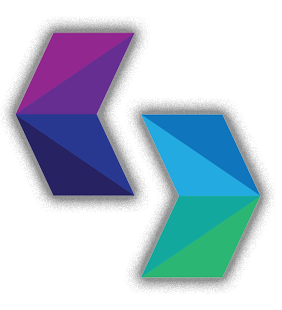Exploring the Pros and Cons: Flutter vs Ruby on Rails
Mobile applications have become an integral part of our lives, offering convenience, entertainment, and utility. As developers, we’re constantly faced with the challenge of choosing the right tools and frameworks to create robust and efficient apps. In this comprehensive guide, we’ll delve into the world of mobile app development and compare two powerful frameworks: Flutter and Ruby on Rails. By the end of this article, you’ll have a clearer understanding of their pros and cons, helping you make an informed decision for your next project.
Introduction
When it comes to developing cross-platform mobile applications, two prominent names often stand out: Flutter and Ruby on Rails. Flutter, developed by Google, and Ruby on Rails, commonly known as Rails, offer distinct approaches to mobile app development. Flutter, a UI toolkit, allows developers to create natively compiled applications for mobile, web, and desktop from a single codebase. On the other hand, Ruby on Rails, a web application framework, emphasizes convention over configuration, streamlining the development process.
Understanding Flutter
Flutter: A Brief Overview
Flutter is an open-source framework that empowers developers to craft visually appealing and performant applications with a single codebase. Its key strength lies in its rich set of pre-designed widgets, enabling the creation of customized user interfaces. Flutter employs the Dart programming language, which offers Just-In-Time (JIT) compilation for development speed and Ahead-Of-Time (AOT) compilation for optimized performance during runtime.
Code Example: Creating a Flutter Widget
import 'package:flutter/material.dart';
void main() {
runApp(MyApp());
}
class MyApp extends StatelessWidget {
@override
Widget build(BuildContext context) {
return MaterialApp(
home: Scaffold(
appBar: AppBar(title: Text('Flutter App')),
body: Center(
child: Text('Hello, Flutter!'),
),
),
);
}
}
Exploring Ruby on Rails
Ruby on Rails: An Overview
Ruby on Rails, often referred to as Rails, is a web application framework written in the Ruby programming language. It follows the Model-View-Controller (MVC) architectural pattern, providing developers with a structured approach to building web applications. Rails emphasizes convention over configuration, reducing the need for extensive configuration setups.
Code Example: Creating a Simple Rails Controller
class UsersController < ApplicationController
def index
@users = User.all
end
def show
@user = User.find(params[:id])
end
end
A Feature Comparison
Both Flutter and Ruby on Rails offer unique features that cater to different aspects of application development. Flutter’s hot reload feature allows real-time changes to be seen instantly, enhancing the development process. On the other hand, Ruby on Rails excels in rapid application development, thanks to its code generators and built-in conventions.
Pros and Cons of Flutter
Pros of Flutter:
- Single codebase for multiple platforms.
- Rich set of customizable widgets.
- Hot reload feature for quicker development.
- High performance due to AOT compilation.
- Active community and comprehensive documentation.
Cons of Flutter:
- Limited access to native device features.
- Larger app size compared to native applications.
- Learning curve for the Dart programming language.
Pros and Cons of Ruby on Rails
Pros of Ruby on Rails:
- Convention over configuration simplifies development.
- Robust ecosystem with gems for extended functionality.
- Rapid development with built-in features like scaffolding.
- Suitable for content-heavy applications.
Cons of Ruby on Rails:
- Primarily geared towards web applications.
- Performance limitations for high-concurrency scenarios.
- Limited control over front-end due to JavaScript reliance.
Choosing the Right Framework for Your Project
Selecting the appropriate framework depends on your project’s requirements and priorities. If you’re aiming for a consistent UI across multiple platforms and value rapid development, Flutter might be the right choice. On the other hand, if you’re focused on building web applications with a strong emphasis on convention and rapid development, Ruby on Rails could be the better fit.
Case Studies: Real-world Examples
To illustrate the practical use of these frameworks, let’s take a look at a couple of case studies:
- Flutter Case Study: “XYZ E-commerce App” Flutter was used to build a cross-platform e-commerce app, ensuring a consistent user experience on both iOS and Android devices. The app boasted a visually appealing UI and achieved significant time savings during development, thanks to Flutter’s hot reload feature.
- Ruby on Rails Case Study: “ABC Blogging Platform” Ruby on Rails powered the development of a blogging platform, enabling content creators to publish and manage articles seamlessly. The convention-driven approach of Rails allowed for rapid iterations and quick feature additions.
Conclusion
In the realm of mobile app development, the choice between Flutter and Ruby on Rails ultimately boils down to the specific needs of your project. Flutter offers a unified solution for building cross-platform apps, while Ruby on Rails excels in web application development. By considering the pros and cons outlined in this article, you’re better equipped to make an informed decision that aligns with your project goals.
FAQs
Q1: Can I use Flutter for web development? Absolutely! Flutter enables the creation of web applications in addition to mobile and desktop apps. However, keep in mind that while Flutter for web is a powerful option, it’s still in the process of maturing.
Q2: Is Ruby on Rails suitable for building complex web applications? Yes, Ruby on Rails can be used to build complex applications. Its emphasis on convention and modularity, along with a robust ecosystem of gems, provides the tools needed to tackle intricate projects efficiently.


